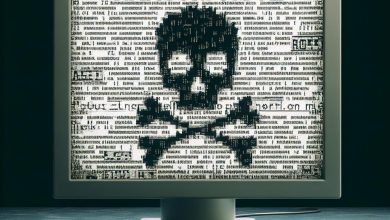
Table of Contents
Introduction to the Malware Testing Experiment
Exploring the digital landscape can often feel like navigating through a minefield, fraught with malicious software designed to exploit, damage, or disrupt your computer system. Among these menacing programs are malware, spyware, adware, trojans, and the deceptive fake antivirus software. To combat these threats, security experts and antivirus developers are constantly in a race to detect and neutralize such harmful programs. This relentless battle demands the constant testing and evaluation of security defenses to keep pace with the rapidly evolving nature of malware.
Testing New Malware and Fake Antivirus Samples
In the realm of cybersecurity, vigilance is key. To ensure the effectiveness of antivirus applications, each software suite is subjected to rigorous analysis, which includes a hands-on test of malware protection. Using a consistent set of samples over months helps understand how a program responds to known threats. However, with new strands of malware emerging every day, it is equally critical to test these programs against the freshest threats. For this, we turn to recently compiled collections of malware-hosting URLs, typically provided by cybersecurity watchdogs like MRG-Effitas. The test scrutinizes an antivirus's proficiency in blocking or eliminating malware during the downloading process and assigns a rating based on its performance. While some antivirus apps excel in independent lab ratings, they might falter in hands-on tests, in which case, deference is given to the lab results due to their more extensive testing resources.
The Idea of Executing All Desktop Files Simultaneously
To emulate the inevitable chaos and potential system overload caused by malware, one particularly extreme testing method involves the execution of all desktop files simultaneously. This test stresses the system's defenses to see if any malicious file can slip through the cracks during a period of intense activity. This kind of stress-testing can reveal how well an antivirus program manages to detect and prevent malware operations in real-time, including the less obvious but equally dangerous fake antivirus software, which masquerades as legitimate protection but instead leaves the user vulnerable to real threats.
Preparing an Old Computer for the Test
For safety and practicality, these tests are often conducted on an isolated system – typically an old computer set apart solely for the purpose of malware testing. This precautionary measure ensures that any damage inflicted by the malware remains contained and doesn't spread to other networks or devices. Prior to the exercise, the computer is loaded with the antivirus software to be tested, and system backups are created to restore the machine to its original state post-analysis. Network connections are customarily monitored or disabled to prevent the malware from reaching out to the internet, which could also help avoid collateral damage. With the testing environment thus secure and the ‘patient’ ready, the antivirus software is put through its paces to determine its capability to protect digital lives from the onslaught of malign software entities.
Selection and Analysis of Fake Antivirus Samples
Fake antivirus software represents one of the most insidious forms of malware. Camouflaged as security software, these malicious entities, often referred to as "scareware," exploit the user's trust and fear to accomplish their fraudulent objectives. To keep users protected from these threats, it is critical that real antivirus programs can distinguish and neutralize such impostors effectively. This segment will delve into how we select and analyze fake antivirus samples to evaluate the robustness of antivirus defenses against these deceptive programs.
Gathering 14 Fake Antivirus Programs
Identifying and compiling a list of fake antivirus programs is the first step in our testing methodology. We have curated a collection of 14 distinct fake antivirus samples, each chosen for their ability to emulate the behavior of scareware encountered by users. These samples exhibit a variety of deceptive tactics, including alarming pop-up warnings and unsolicited virus scans that falsely report numerous nonexistent threats. Our selection process involves careful research to ensure that the gathered specimens accurately represent the current scareware landscape. The variety considered ensures a comprehensive analysis of how the antivirus software being tested deals with different approaches and mechanisms used by fake antivirus programs.
Scanning with AVG Antivirus Free Edition
In conducting our examination, we subject the collection of fake antivirus samples to scrutiny using AVG Antivirus Free Edition, a popular security software. The purpose of utilizing AVG is to observe the software's response to each sample—whether it is able to correctly identify and deal with the threat. During the scanning process, we look for a range of outcomes, such as quarantine, deletion, or complete blocking of the scareware's operation. The analysis extends beyond detection capabilities, as we also observe and record the level of system resources utilised, the duration of scanning processes for real-time defense, and how these factors impact user experience. By simulating a user environment, we aim to provide a realistic appraisal of the antivirus software's performance against scareware.
List of Fake Antivirus Samples Tested
The following is an illustrative list of fake antivirus samples we have included in our testing phase:
- WinDefender2009
- Antivirus XP Pro
- System Security Antivirus
- PC Privacy Cleaner
- Security Solution 2011
- Virus Doctor
- Antivirus 10
- Ultimate Antivirus 2008
- Power Antivirus
- Antivirus360
- VirusAlarm
- Trust Fighter
- Antivirus Pro 2017
- Advanced Cleaner Pro
The list represents a comprehensive array of scareware that showcases a variety of deceptive techniques and attack vectors. The test aims to evaluate the AVG Antivirus's efficacy against each of these threats, thereby informing its overall ability to protect users from the pernicious effects of fake antivirus software.
Execution of the Fake Antivirus Samples
The execution phase of testing fake antivirus samples is a critical component in evaluating the effectiveness of antivirus software. This process involves deliberately running the collected scareware to monitor how the system and the real antivirus respond. The objective is to simulate the scenarios a typical user might encounter when exposed to fake antivirus software.
Initiating the Test by Opening All Files
Our methodology starts with the initiation of our test environment—often a controlled, virtual machine or an isolated computer system. All gathered fake antivirus samples are stored in a single location, ready to be executed. We commence the test by opening all the files simultaneously to challenge the real antivirus software to its limits. This method tests not only the antivirus program's detection capabilities but also its ability to handle the pressure of multiple threats at once, mirroring the multi-vector attacks often experienced by users.
Observations of System Performance and Behaviors
As the fake antivirus programs are executed, the antivirus software's real-time protection mechanisms kick into action. Throughout this process, close observations are made of system performance and behaviors. This includes tracking CPU and memory usage to evaluate the impact on system resources and noting any unusual system behavior such as slowdowns, crashes, or unauthorized attempts to access the network. These observations are vital for assessing whether the antivirus can protect the user's system without substantially degrading performance.
Disappearance and Error Messages from Fake Antivirus Programs
While monitoring the system, we pay attention to the response of each fake antivirus program when confronted by the real antivirus software. Prompted actions such as automatic quarantine, deletion, or specific error messages are recorded. Some fake antivirus applications may attempt to mimic legitimate processes or present fake warnings in an attempt to stay operational. The effectiveness of the real antivirus is determined by its ability to cut through these deceitful tactics and neutralize the threat immediately.
Creation of a New Suspicious '.exe' File
As part of the evaluation, a new suspicious '.exe' file is created to assess the behavior-based detection capabilities of the antivirus. This executable is unknown and unlisted in any virus databases, thus testing the heuristic and behavioral analysis prowess of the software. It's intriguing to note whether the antivirus will allow the execution of this new file based on its behavior or restrict it due to the lack of a recognizable signature. The results help us understand the level of sophistication of the antivirus's proactive defenses against new and emerging threats that have no prior identification.
By meticulously executing these tests and recording the outcomes, we aim to shed light on which antivirus solutions offer the most comprehensive protection against the pervasive threat of fake antivirus software. The findings play a crucial role in guiding consumers in making informed decisions about their cybersecurity choices.
Results and Conclusion of the Test
In concluding the rigorous testing of fake antivirus samples, we evaluated the antivirus software's ability to handle a deluge of scareware. By executing these deceptive programs, we not only examined the software's detection capabilities but also its reaction to various malware tactics and its overall impact on system stability.
System Instability and Eventual Blue Screen of Death
As a consequence of running multiple fake antivirus programs, system instability was a frequent outcome. The intensive resource demands and conflicting operations of the scareware often lead to system overloads, visible through repeated crashes and sluggish performance. In some extreme cases, the culmination of these events resulted in the dreaded blue screen of death (BSOD), representing a complete system failure and a critical scenario for any user. This outcome underscores the potential hazards posed by such malicious software and highlights the importance of effective antivirus solutions in providing reliable protection.
Rebooting the System and Assessing the Aftermath
Following a system crash, a reboot was essential to assess the aftermath and the thoroughness of the antivirus software's remediation capabilities. We meticulously checked for the persistence of scareware elements, reviewing system logs, registry entries, and startup programs. The antivirus software's ability to effectively clean up and restore normal operation without further intervention served as an indication of its resilience and effectiveness against such adversarial intrusions.
Determining the 'Winner' of the Fake Antivirus Competition: Security Sphere 2012
In this particular test, Security Sphere 2012 stood out among the rogue antivirus samples. Despite the array of sophisticated fake antivirus programs tested, Security Sphere 2012 exhibited resilience against the antivirus software's defenses, managing to persist through initial detection and system restarts. It presented an array of convincing alerts and system warnings designed to dupe users into taking action, proving a formidable opponent for the antivirus solution under evaluation.
Assessing the overall performance and resistance to fake antivirus programs, it became evident that multifaceted security measures, including regular updates of malware definitions, heuristic analysis, and real-time protection, are crucial in combating these threats. Absolute protection remains an ideal goal, yet through such testing, we gain valuable insights into the strengths and weaknesses of antivirus solutions, informing future improvements and strategies. Accordingly, users are advised to remain vigilant, perform regular software updates, and utilize robust, reputable antivirus software to enhance their resilience in the ever-evolving cybersecurity landscape.




